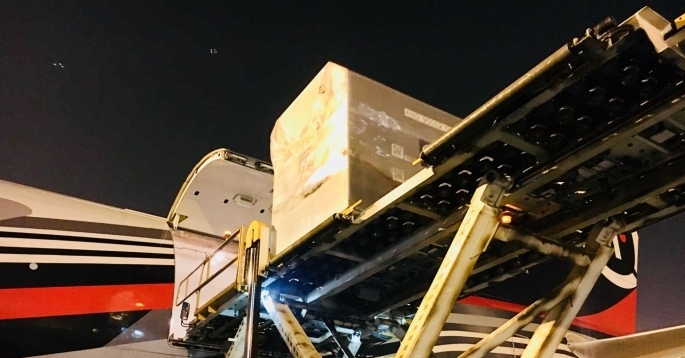Air freight trade in Asia Pacific and Middle East declined 4% in October: ACI
December 28, 2019: Air freight trade in both Asia-Pacific and the Middle East declined by 4 percent according to the October report of Airports Council International (ACI).

December 28, 2019: Air freight trade in both Asia-Pacific and the Middle East declined by 4 percent according to the October report of Airports Council International (ACI).
“While most major air freight hubs in the region reported declines during the month, a number of airports in China managed to generate positive growth as trade tensions between the United States and China showed signs of easing: Shanghai Pudong (PVG) +2.4 percent, Guangzhou (CAN) +2.7 percent, and Shenzhen (SZX) +9.1 percent,” says the release.
Passenger traffic in Asia-Pacific and the Middle East recorded growth in October at +1.1% and +5.2% respectively.
In India, passenger traffic in both international and domestic segments improved, driven by the rising demand for travels during public holidays. The three airports with the most passenger volume increase from last year were: Delhi (DEL) +3.1%, Kolkata (CCU) +5.8% and Hyderabad (HYD) +4.6%.
China’s passenger traffic grew modestly in October, reflecting signs of easing especially in the domestic sector. The three airports with the most passenger volume increase from last year were: Chengdu (CTU) +4.9%, Shenzhen (SZX) +4.9% and Guangzhou (CAN) +3.3%.
Elsewhere in Asia-Pacific, passenger traffic between Japan and South Korea was adversely affected by diplomatic tensions between the two countries. Nevertheless, Jeju (CJU) and Seoul Gimpo (GMP) managed to grow +12.5% and +7.7% respectively, supported by increased domestic tourists amid lower demand from Japan.
In the Middle East, passenger traffic growth gained momentum and grew at +5.2%. Dubai (DXB), the largest hub in the region, reported positive growth at +1.9%. Other high growth airports included Doha (DOH) +16.1% and Sharjah (SHJ) +13.9%.




